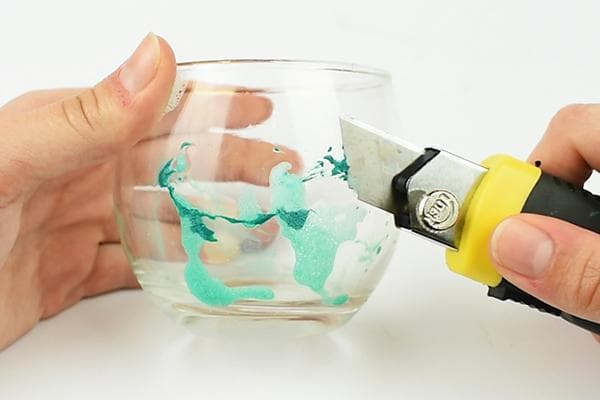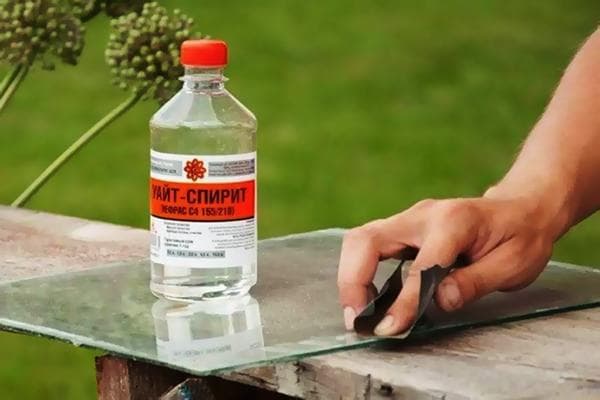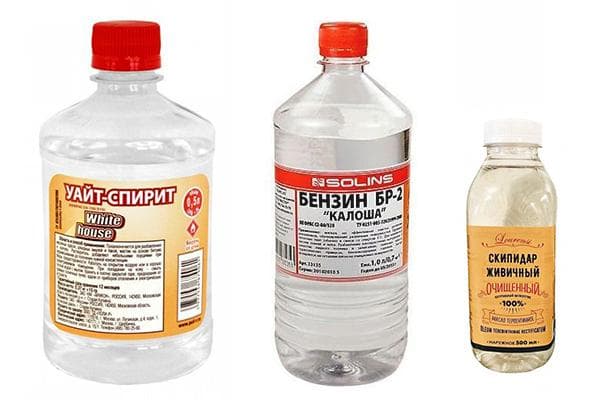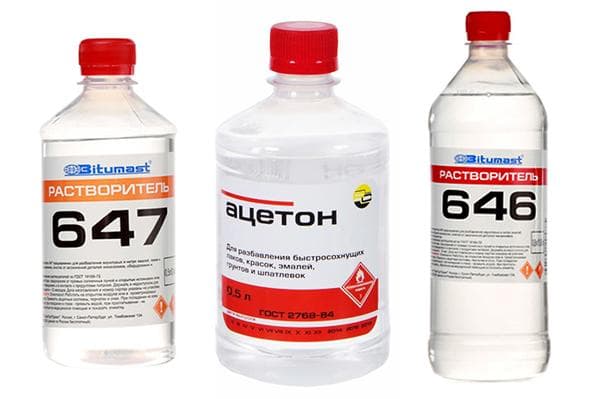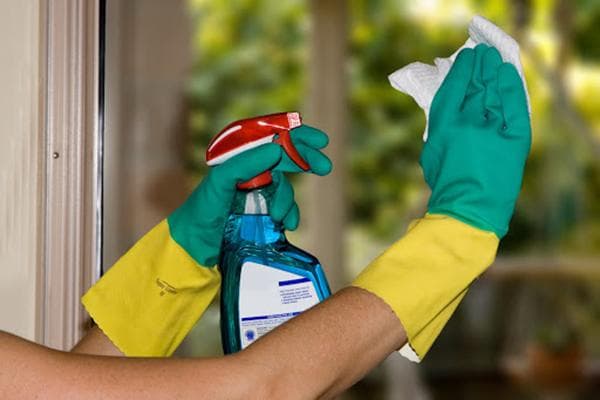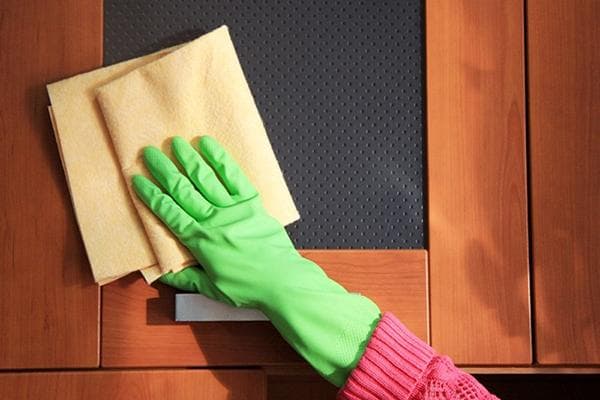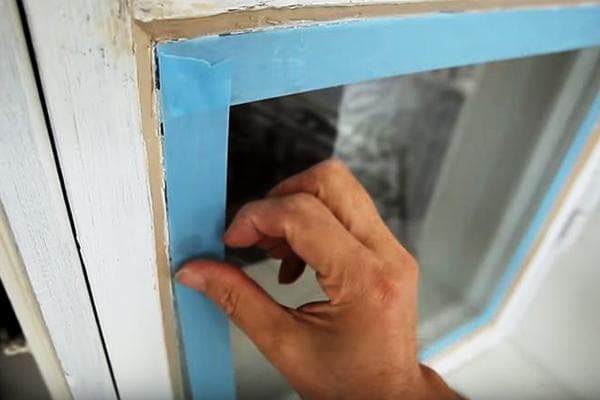How and with what to remove paint from glass at home - the best ways
During repairs there are rarely any incidents. One careless movement and the glass of a window or interior door is stained with paint. Of course, such an unexpected “decoration” does not improve the appearance of the room, so it’s worth learning how to remove paint from glass so that no traces remain on the surface.
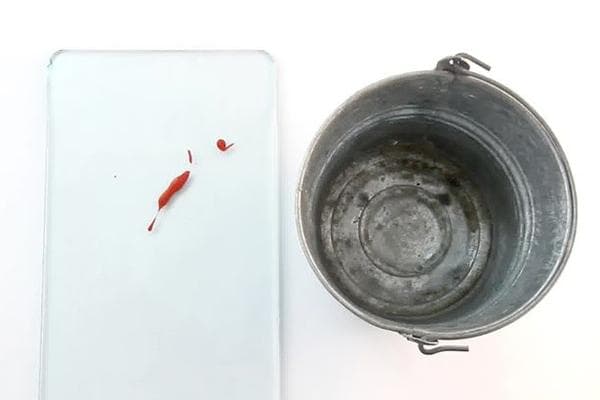
Possible methods
Glass is a fragile material, but hard and chemically inert. Therefore, in order to wash paint off glass, you can use different methods:
- The simplest one is mechanical. Since glass is usually scratch-resistant, it can be rubbed with hard sponges or even scraped with a knife.
- Sometimes, to facilitate the process of mechanical removal of smears and drops, preheating is used. But here you need to be careful: a sharp temperature change can cause the glass to burst.
- The chemical method is less labor-intensive. Glass can be treated with various solvents; it will not cause any harm.
Mechanical cleaning
This method is most often used at home, as it is very reliable, although labor-intensive. If there is not much paint on the glass, then it is better to use it.
Fresh drops and smudges can be easily removed with a knife or spatula. But if the paint has already dried, it will be much more difficult to complete the job.
To make it easier to remove old paint, you can carry out preparatory work:
- Degrease the surface to be cleaned.To perform this work, you can use an alcohol solution or any industrial glass cleaner.
- Then the paint layer must be softened - for this it should be heated. You can use a hairdryer: attach a sheet of foil to the stained area and heat it with a stream of hot air.
- A less effective, but simpler method: dampen a rag in hot water and apply it to the area stained with paint for 15 minutes (so that you don’t have to hold the rag for a long time, you can fix it with masking tape).
Once warmed up, the softened paint can be easily scraped off.
The option of heating the window glass should not be used if it is cold outside. Sudden temperature changes can lead to cracks. For the same reason, you should not set the heat level of the hair dryer to maximum.
To mechanically remove paint smudges, you can use:
- a knife with a thin blade (a stationery knife is perfect);
- metal spatula of suitable size;
- razor blade (it can be used if you need to remove very small droplets, but working with a blade is not very convenient).
To remove paint from the glass surface, proceed as follows:
- apply the sharp edge of the tool to the drop or smudge;
- Press the blade firmly, but not too tightly, onto the glass;
- Remove the paint layer from the surface with a smooth movement.
It is unlikely that you will be able to remove dirt in one motion; you should break off pieces one by one. The remaining mark can be wiped off using any glass cleaner.
Use of solvents
The easiest way to remove traces of paint from window glass is to use solvents.
| Pros of using solvents | Disadvantages of using solvents |
| · high efficiency; | · additional financial costs for the purchase of solvents; |
| · speed; | · When working, it is necessary to observe safety precautions. |
| · safety for glass surfaces. |
The choice of solvent depends on the type of paint.
For oil paints use:
- Petrol. Widely used solvent. To clean glass, you should purchase purified gasoline, for example for lighters. Refined kerosene will have a similar effect.
- Turpentine. A substance of complex composition, suitable for removing traces of not only oil-based paints, but also alkyd-styrene paints.
- White Spirit. The solvent is used to dissolve oil and enamel paints.
For other types of paints the following solvents are needed:
- Acetone. Suitable for removing traces of perchlorovinyl paints.
- Solvent No. 646. Cleans acrylic paints and epoxy varnishes well.
- Solvent No. 647. It will help wash off nitro enamel from glass.
When using solvents, you need to make sure that these liquids do not get on the plastic parts of the frames and window sills. Acetone is especially dangerous in this regard: it can seriously damage plastic. Therefore, it is worth covering the window sill in advance with several layers of newspapers or film. Such a protective measure will be sufficient.
If the marks on the window are old, then it is not easy to determine the type of paint from them. In this case, it is recommended to use a universal paint remover. Another almost universal substance that dissolves most paints is toluene. But it belongs to the toxic category, so it requires caution when used.
Precautionary measures
Most solvents contain volatile substances, the inhalation of which is harmful to health. In addition, they can cause skin irritation, so you need to take precautions:
- ensure good ventilation, that is, work with the solvent with the window open;
- Protect your hands with gloves.
It is not necessary to wear a respirator, but for people who are especially sensitive to strong odors or suffer from allergies, such a protective measure is necessary.
During the work, you cannot put in a lot of effort so as not to break the windows. If it is possible to remove the glass, then it is better to do so. When processing a surface lying horizontally, the risk of breaking glass is much lower.
How to carry out the work?
The easiest way to remove fresh paint stains on glass. To perform this operation, moisten a rag or sponge in solvent and carefully wipe off any traces. After the paint has been removed, the glass should be washed using a solution of ammonia or a ready-made glass cleaner.
If traces of paint have already dried, simply wiping the surface will not solve the problem. Especially if there are drops of significant thickness left. In this case, you need to give time for the solvent to work:
- moisten a piece of cloth or cotton wool in a solvent;
- apply to the area of contamination and fix it on the glass using masking tape;
- leave for an hour or more;
- check how much the paint has softened;
- if it becomes soft, carefully remove it with a scraper;
- If it is not possible to remove the stain, then you need to apply a rag soaked in solvent to the stain again.
After removing the paint layer, the surface should be washed with water or glass cleaner and wiped dry.
Prevention measures
Removing stains and paint runs from glass is not a difficult job, but it is labor-intensive and time-consuming. Therefore, it is better to take measures in advance so that you don’t have to scrub anything later:
- When painting window frames, you should use masking tape. It is glued in strips close to the frame. After this, you can start painting - the marks will remain on the tape, and they will be easy to remove by simply removing the pasted strips.
It is not recommended to use regular office tape to protect glass. It will protect glass surfaces no worse than a painter's, but when removed, traces will remain on the surface, which will then take a long time to scrub off.
- If you don’t have tape, you can thickly soap the glass along the frames with laundry soap. After completing the repairs, you will need to wash the windows - traces of paint will be washed off with soap.
- An even more radical and effective method of prevention is to completely seal windows and glazed areas of interior doors with film. Such protection should not be removed until the repair is completed, then the glass will definitely remain clean.
If stains and smudges do appear, it is better to remove them fresh. In this case, much less effort and time will be required.
